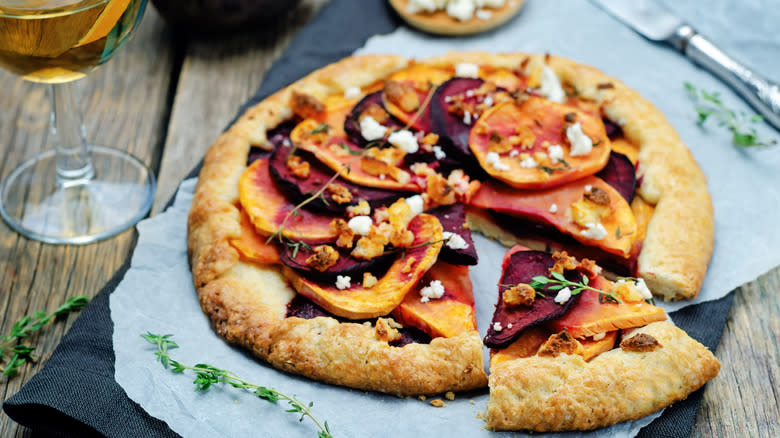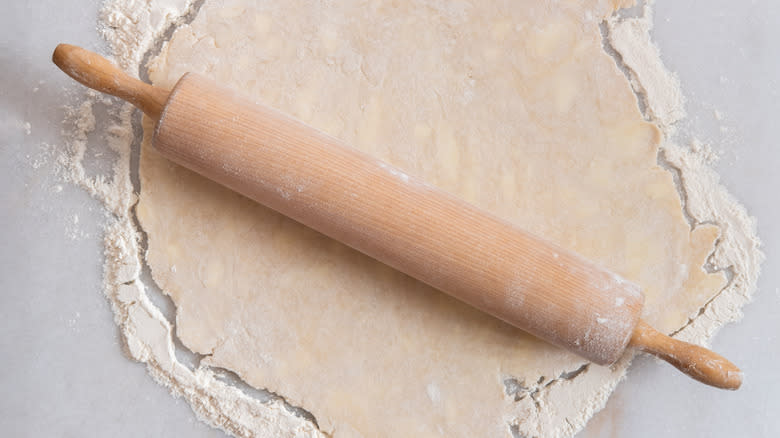The Common Mistake To Avoid At All Costs When Making Vegetable Galettes

A galette is a simple way to make a little, elegant open-faced pie. You don't need to fuss with pie plates or double crusts, or even fluting. Galettes are an opportunity to make something simple that appears elegant and put together and tastes delicious. They're versatile, but especially useful when there's a glut of summer produce – freshly picked berries and peaches, or too many tomatoes or bunches of kale and asparagus. No matter how you enjoy them, sweet or savory, they're easy to pull off, but with all pastry, there are foibles.
Flaky pie crust doesn't like extra moisture. Anyone who's ever seen an episode of "The Great British Baking Show" or baked a pie can tell a soggy bottom guarantees a less than great eating experience. Fruit and vegetables are mostly water. When they're cooked, the juicy vegetables and fruit leak into the pastry, creating the dreaded soggy bottom. It's quite a common mistake, but to combat a leaky or soggy vegetable galette, there's an extra step you should take.
Read more: Cake Hacks Every Baker Will Wish They Knew Sooner
Pre-Cooking Your Fillings Guarantees No Soggy Bottom

Fruit meant for a pie or galette is usually tossed with a starch like flour or cornstarch to sop up the released liquids and make a thick sauce. However, making a veggie-based, savory galette, like feta and caramelized onion, comes with its own separate problems. Veggies often lack the pectin that fruits have, so they can't make their own sauce, as it were, and they will tenderize in the oven – eventually. But by the time that happens, your galette crust will be burnt. Because they don't break down quickly when cooked in the oven, vegetables need a little head start. So to get the texture you're looking for – and to prevent a soggy bottom – cook your fillings first.
The vegetable you're using will determine how to pre-cook your vegetables. If you're going to fill your vegetable galette with watery vegetables, like tomato or zucchini, it's best to roast them in the oven until browned. Greens should be sautéed and have the water squeezed out before being wrapped in the galette. Mushrooms, onions, garlic, and the like should also be sautéed or roasted before being added.
Give Your Crust Insurance Against Soggy Bottoms

If, after sauteing and baking you find that your galette still has a soggy bottom, then there are other ways to prevent it. The first is to prevent things from touching. Using an egg white wash on the bottom before you add your fillings will create a waterproof barrier between the fussy pie dough and the moisture-heavy vegetables. You can also sprinkle breadcrumbs, seasoned or not, or flours such as semolina or cornmeal and then fill the galette. With both of these methods you'll not only be giving your galette some insurance against soggy bottoms and leaks, you'll be adding texture to the galette.
The other way is to give the underside of the galette a fighting chance by baking it on a pizza stone or pizza steel to cook the bottom all the way through. Before you roll out your dough and fill it, preheat the oven with the stone or steel inside. Then, when it's time to bake, place your galette either directly on the stone, or use parchment paper.
Read the original article on Daily Meal.

